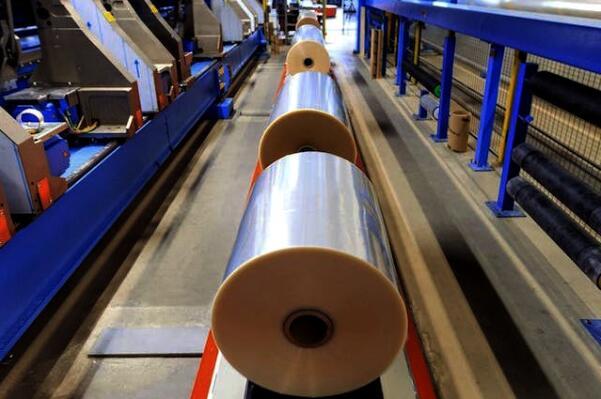BOPP Film Market Sees Strong Growth Amid Rising Demand for Flexible and Eco-Friendly Packaging

The global Biaxially Oriented Polypropylene (BOPP) film market has shown significant growth over the past decade, driven by the increasing demand for flexible packaging, the rising need for sustainable and cost-effective materials, and the rapid expansion of e-commerce and food industries. BOPP films, made by stretching polypropylene in both machine and transverse directions, are widely appreciated for their excellent mechanical properties, clarity, moisture resistance, and cost-effectiveness. This article offers a concise 800-word analysis of the current BOPP film market, covering trends, growth factors, challenges, and forecasts.
Market Overview
As of 2024, the global BOPP film market is valued at approximately USD 25 billion, with projections suggesting it could reach USD 35 billion by 2030, growing at a CAGR of around 5-6%. The market is highly competitive and fragmented, with numerous players operating regionally and globally. Key manufacturers include Jindal Poly Films, Cosmo Films, Taghleef Industries, Uflex Ltd., and Toray Plastics.
Asia-Pacific dominates the global BOPP film market, accounting for over 60% of the total demand. Countries like China and India lead consumption due to their booming packaging industries, strong manufacturing bases, and increasing consumer populations. North America and Europe are also significant markets, driven by technological innovation, higher adoption of eco-friendly materials, and stringent packaging regulations.
Key Market Drivers
1. Growing Packaging Industry
One of the most critical drivers of the BOPP film market is the global expansion of the packaging sector. Flexible packaging, in particular, has witnessed rapid growth due to its lightweight nature, convenience, and lower cost compared to rigid packaging. BOPP films are widely used in packaging applications such as snack foods, fresh produce, tobacco, and confectionery, making them a staple material in the industry.
2. Rise in E-commerce
The explosive growth of e-commerce, particularly since the pandemic, has fueled the need for durable, lightweight, and printable materials for shipping and product packaging. BOPP films are ideal for these applications due to their strength and excellent surface properties for printing and lamination.
3. Sustainability Trends
Environmental regulations and rising consumer awareness are pushing manufacturers to adopt recyclable and sustainable materials. BOPP films offer better recyclability compared to multilayer packaging structures made from incompatible polymers. As a result, brands are increasingly opting for mono-material packaging solutions based on BOPP.
4. Cost Efficiency and Versatility
BOPP films offer an optimal balance between performance and cost. Their production cost is lower compared to other plastic films like polyester, and they offer superior barrier properties against moisture, oxygen, and aroma, making them versatile for various applications.
Market Challenges
Despite the growth prospects, the BOPP film market faces several challenges.
1. Environmental Concerns: Although BOPP is recyclable, the recycling infrastructure in many parts of the world is still inadequate, leading to environmental waste concerns.
2. Volatility in Raw Material Prices: BOPP film production heavily relies on polypropylene, a petroleum-based product. Fluctuations in crude oil prices directly impact raw material costs, affecting profitability.
3. Competition from Alternatives: The rise of biodegradable and compostable films made from materials like PLA (polylactic acid) poses a potential threat, especially in regions with strict environmental regulations.
Application Insights
The BOPP film market is segmented into packaging, labeling, and industrial uses, with packaging occupying the largest share. Within packaging, food packaging is the most dominant segment, where BOPP films are used to preserve freshness and extend shelf life. Labeling is another growing application, especially with the rise of branded consumer products. In industrial applications, BOPP films are used for adhesive tapes, lamination, and printing.
Regional Analysis
-
Asia-Pacific: Expected to remain the leading market due to rising consumption, low manufacturing costs, and high export activity.
-
North America: Strong focus on sustainable packaging and increasing demand for high-performance films.
-
Europe: Driven by regulatory mandates around recyclability and innovation in mono-material packaging.
-
Middle East & Africa: Emerging markets with increasing investment in packaging infrastructure and urbanization.
-
Latin America: Gradual growth due to increasing retail and food sectors.
Technological Developments
Technological advancements are significantly shaping the BOPP film industry. Manufacturers are investing in high-speed production lines, metallization technologies, and barrier-enhancing coatings to improve film performance. Innovations in film thickness, sealability, and printability have also allowed producers to cater to more demanding packaging specifications.
Future Outlook
Looking ahead, the BOPP film market is set to benefit from multiple macroeconomic and industry-specific trends. The shift toward sustainable packaging, coupled with advancements in recycling systems, will enhance the appeal of BOPP films. In addition, as consumer goods companies seek to reduce their environmental footprint, the demand for mono-material solutions like BOPP will continue to rise.
Furthermore, increased automation and digitization in packaging lines are expected to spur demand for films with consistent quality and high machinability—an area where BOPP performs well. Companies investing in R&D to create specialty BOPP films with added functionalities like anti-fog, anti-microbial, or UV resistance will likely gain a competitive edge.
Conclusion
The BOPP film market is on a growth trajectory, supported by trends in packaging, sustainability, and technological innovation. While challenges like environmental concerns and raw material volatility persist, the market's adaptability and the versatility of BOPP films position it well for continued expansion. As industries and consumers increasingly prioritize performance, cost-efficiency, and environmental impact, BOPP films are poised to remain a key material in the global flexible packaging ecosystem.
- Art
- Causes
- Crafts
- Dance
- Drinks
- Film
- Fitness
- Food
- Игры
- Gardening
- Health
- Главная
- Literature
- Music
- Networking
- Другое
- Party
- Religion
- Shopping
- Sports
- Theater
- Wellness


